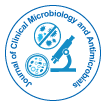

Opinion Article - (2025)Volume 9, Issue 1
Antimicrobial resistance (AMR) is a critical public health concern globally, and children are not exempt from its consequences. The pediatric population presents unique challenges in antimicrobial prescribing, due to age-specific pharmacodynamics, limited approved drug formulations, and diagnostic uncertainty in young patients. As a result, inappropriate or unnecessary antibiotic use is common in pediatric settings, especially in primary care and emergency departments. Antimicrobial Stewardship Programs (ASPs), which aim to optimize antimicrobial use to improve patient outcomes and reduce resistance, have proven effective in adult populations. However, the implementation of ASPs in pediatric care remains inconsistent and often underdeveloped. Addressing the gaps and leveraging opportunities in pediatric antimicrobial stewardship is essential to preserving antibiotic efficacy for future generations.
One of the primary gaps in pediatric antimicrobial stewardship lies in the lack of pediatric-specific guidelines and decision-support tools. Many existing ASP protocols are adapted from adult care without sufficient evidence for pediatric application. For example, empiric therapy choices and dosing recommendations often lack robust data in children, especially neonates and infants. Additionally, pediatric prescribers frequently face diagnostic uncertainty, as common symptoms such as fever, cough, or irritability are non-specific and can be associated with both viral and bacterial infections. This uncertainty can lead to the overuse of broad-spectrum antibiotics, even when a viral etiology is suspected. Furthermore, concerns over legal liability and parental pressure to prescribe antibiotics “just in case” contribute to inappropriate use in outpatient and emergency settings.
Diagnostic limitations also hinder stewardship efforts. Rapid diagnostic tests that distinguish bacterial from viral infections are not yet widely adopted or validated for routine pediatric use. In settings where laboratory infrastructure is lacking or turnaround times are long, clinicians are more likely to initiate empiric antibiotic therapy rather than delay treatment. This is particularly evident in low-resource environments or in busy hospital wards where clinicians may not have access to timely infectious disease consultation. Investment in pediatric-friendly diagnostic technologies, such as point-of-care CRP or procalcitonin testing, could help reduce unnecessary antibiotic prescriptions by increasing clinician confidence in managing viral infections conservatively.
The human factor is another significant barrier. Pediatricians and pediatric nurses may be less familiar with antimicrobial stewardship principles compared to their counterparts in internal medicine or infectious diseases. Education and training in prudent antibiotic prescribing during pediatric residency and Continuing Medical Education (CME) are often insufficient. In Germany, for instance, antimicrobial stewardship training is now being integrated into pediatric postgraduate curricula, but uptake is still variable across institutions. In addition, lack of dedicated personnel, including pediatric infectious disease specialists or clinical pharmacists, makes it difficult to sustain stewardship programs, especially in smaller hospitals or rural areas. Multidisciplinary collaboration is crucial for success, yet many pediatric ASPs struggle with staffing and organizational support.
Despite these challenges, there are considerable opportunities to enhance antimicrobial stewardship in pediatric settings. Surveillance of antibiotic prescribing patterns can help identify areas for intervention. Electronic Health Record (EHR) systems can be leveraged to implement alerts, order sets, and audit and feedback mechanisms tailored for pediatric patients. Evidence suggests that even modest interventions, such as guideline dissemination or peer comparison reports, can reduce inappropriate prescribing, particularly for common conditions like otitis media, pharyngitis, and lower respiratory tract infections. Another promising avenue is parental education. Studies have shown that parents who understand the risks of AMR and the limited role of antibiotics in viral illnesses are less likely to demand prescriptions. Public awareness campaigns and clear communication strategies during clinical visits can therefore support judicious prescribing practices.
Moreover, successful pediatric ASPs have been implemented in tertiary care centers, demonstrating improved outcomes such as reduced antibiotic days, decreased incidence of Clostridioides difficile infections, and cost savings. These models can serve as blueprints for expanding ASPs to community hospitals and outpatient settings. Telemedicine platforms, which saw widespread adoption during the COVID-19 pandemic, also offer a novel opportunity for real-time stewardship consultation and education, particularly in under-resourced regions. International collaboration and standardization of pediatric ASP metrics will be critical to benchmarking progress and fostering best practices across different healthcare systems.
In conclusion, antimicrobial stewardship in pediatric settings is both a necessity and a challenge. The current gaps in pediatric-specific guidelines, diagnostic tools, provider training, and infrastructure must be addressed to ensure effective and safe antimicrobial use in children. However, the opportunities for improvement are substantial. By investing in targeted diagnostics, enhancing provider and parental education, and leveraging technology and interprofessional collaboration, we can strengthen pediatric stewardship efforts and combat antimicrobial resistance more effectively. The development and support of pediatric ASPs should be viewed as a critical component of global AMR mitigation strategies. As awareness grows and evidence accumulates, the integration of stewardship into every level of pediatric care will become not only feasible but imperative.
Citation: Krüger H (2025). Antimicrobial Stewardship in Pediatric Settings: Gaps and Opportunities. J Clin Microbiol Antimicrob.09:222.
Received: 03-Mar-2025, Manuscript No. JCMA-25-37633; Editor assigned: 04-Mar-2025, Pre QC No. JCMA-25-37633 (PQ); Reviewed: 18-Mar-2025, QC No. JCMA-25-37633; Revised: 25-Mar-2025, Manuscript No. JCMA-25-37633 (R); Published: 01-Apr-2025 , DOI: 10.35248/ JCMA.25.09.222
Copyright: © 2025 Krüger H. This is an open-access article distributed under the terms of the Creative Commons Attribution License, which permits unrestricted use, distribution, and reproduction in any medium, provided the original author and source are credited.